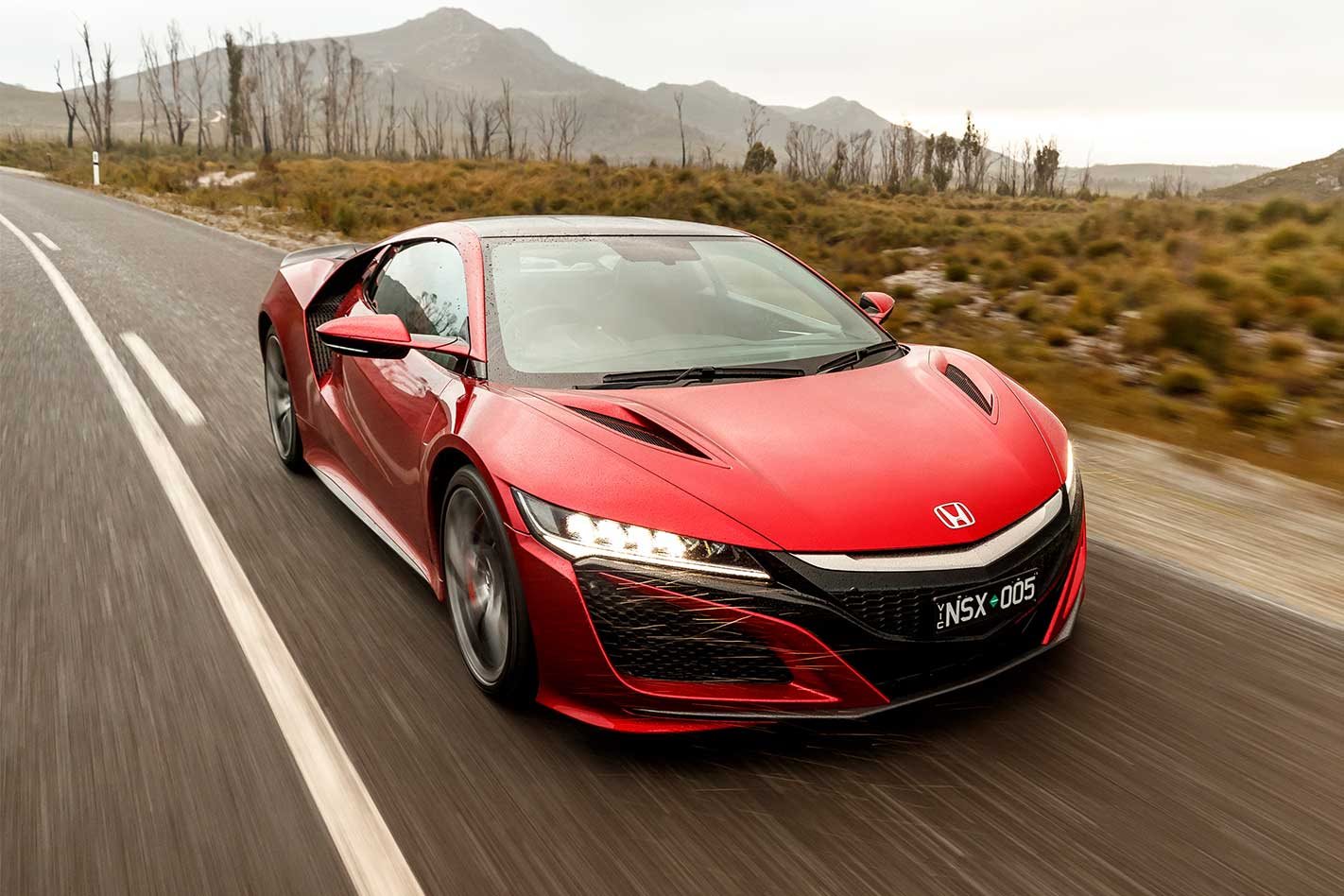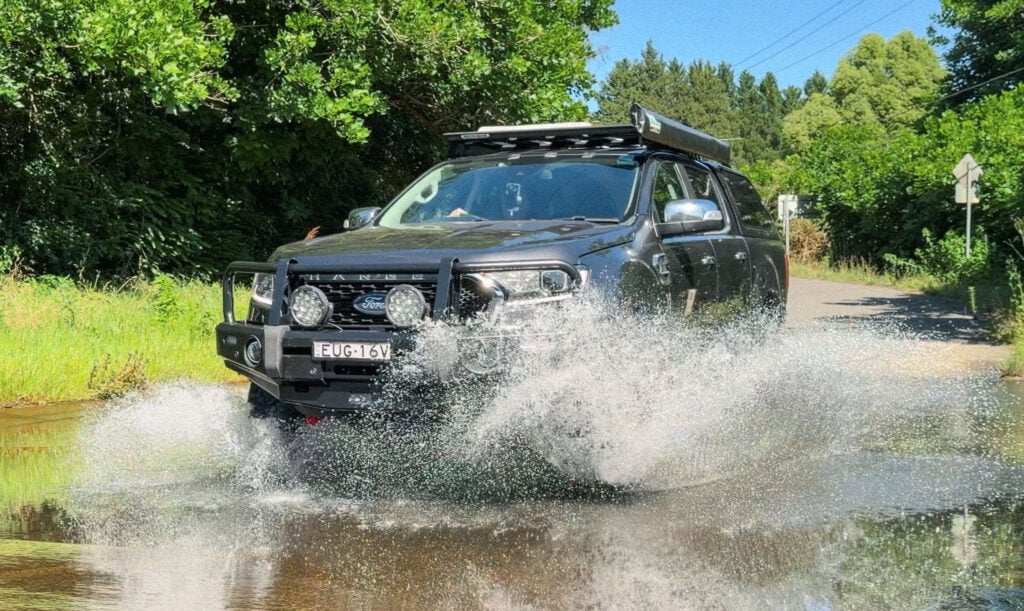As car nuts, we’re obsessed with power. It dominates almost every discussion, we empty our wallets in pursuit of more and it’s the figure that matters most for any new fast car.
Honda knows this, but while the original NSX became the supercar benchmark in many areas, thanks to Japan’s ‘gentleman’s limit’ of 206kW, outright performance wasn’t one of them.
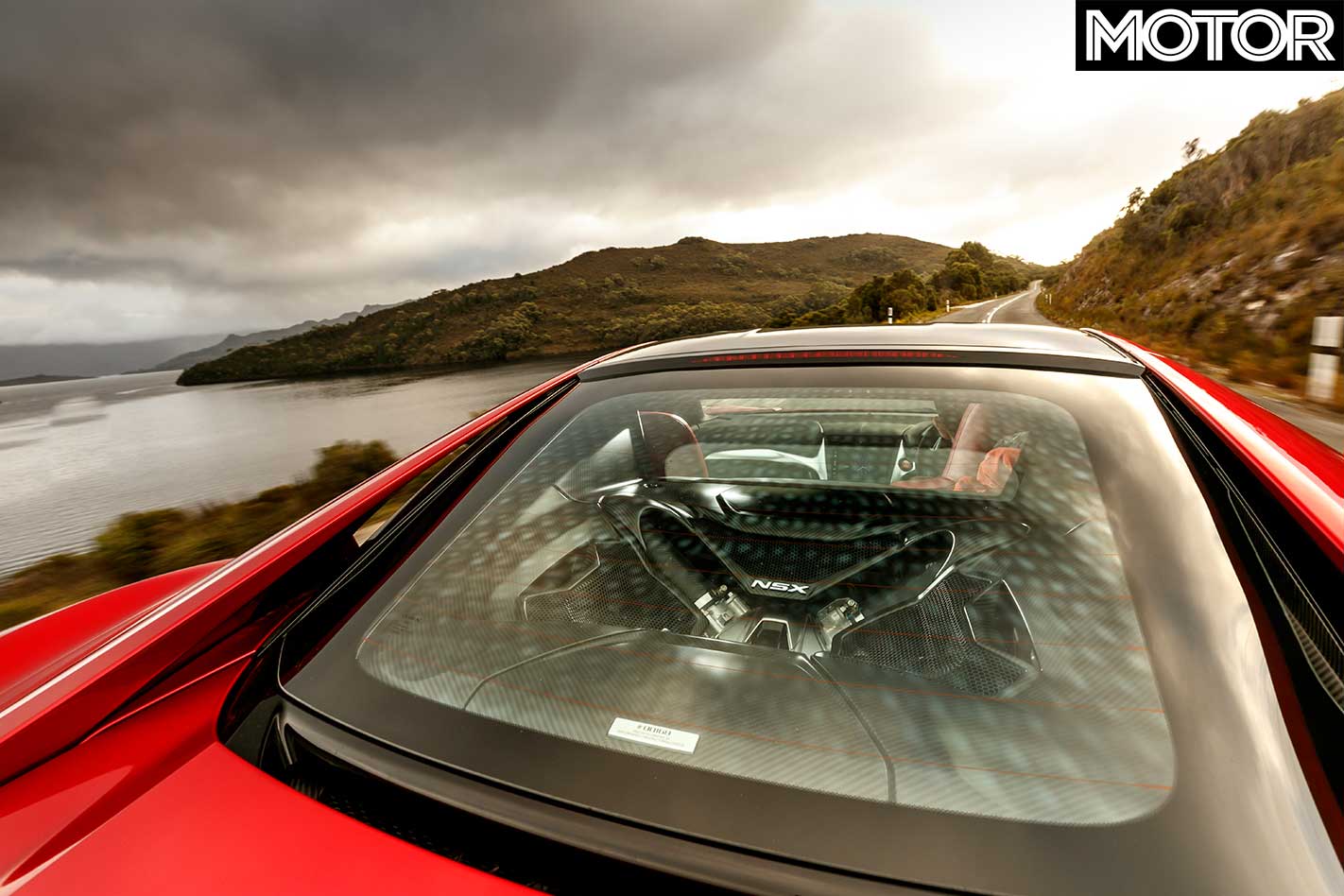
It wasn’t going to make the same mistake twice. The second-generation NSX was tasked with reviving Honda’s performance reputation; it needed power to match the absolute best. Its 3.5-litre V6 is not only boosted by two turbos for 373kW/550Nm, but augments this with a trio of electric motors. Combined, these power sources produce an impressive 427kW/646Nm.
Relatively impressive, that is. We car enthusiasts know nothing of real power. This road trip will take us to a destination which produces 432,000kW at full tilt. It isn’t quite as quick as the NSX; Honda’s hybrid hero hits 100km/h in around 3.0sec and tops out at 308km/h, whereas our target can only move a maximum of 20mm, because it’s 140m tall and 198m long.
At its completion, the Gordon Dam was Australia’s tallest, today standing fifth on the list. This year marks 40 years since the Gordon Power Station that accompanies it began providing clean hydro-electric power to up to 25 per cent of Tasmanian homes, so to pay tribute it seemed appropriate to take a supercar that at least pays lip service to reducing emissions.
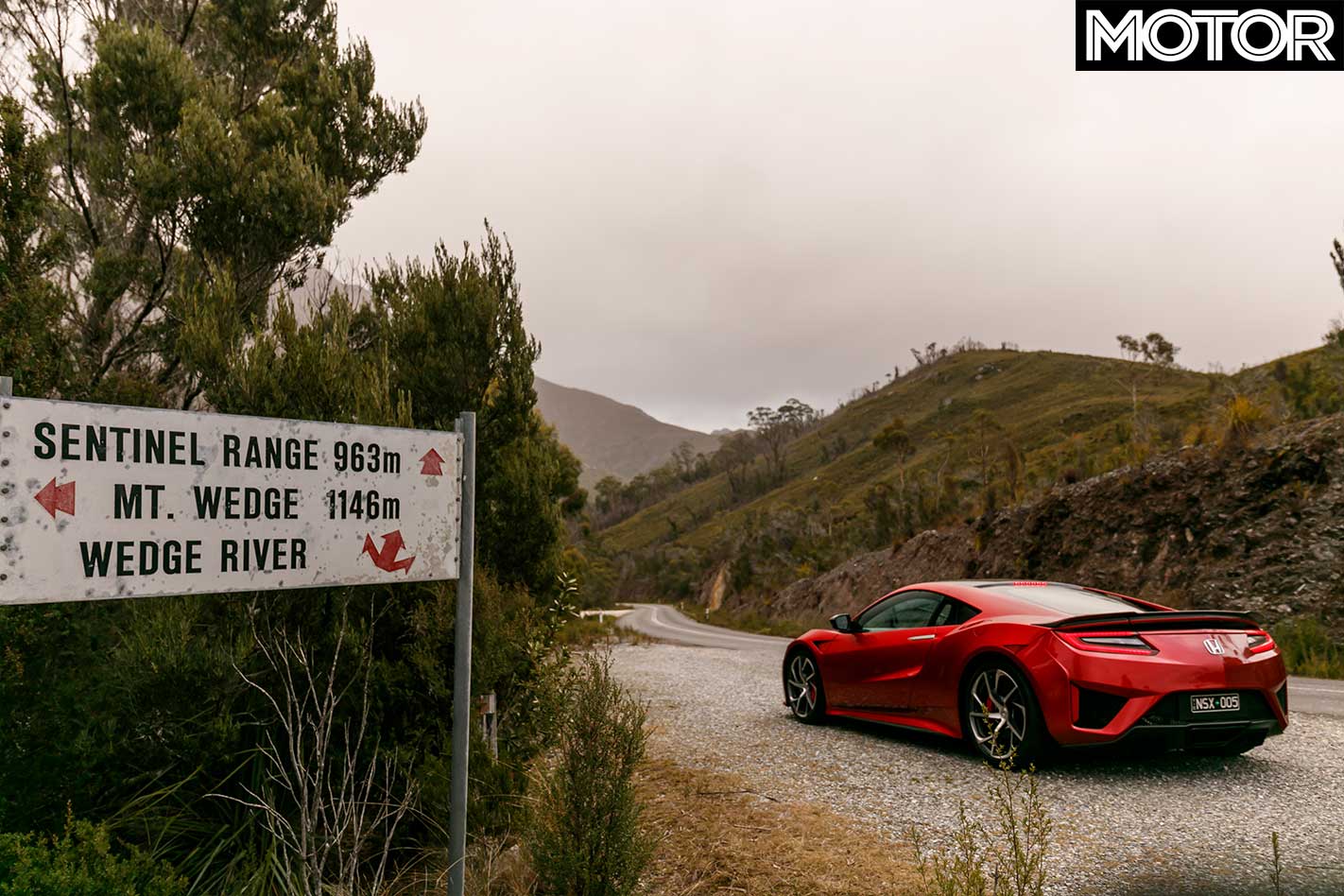
Honda’s new supercar doesn’t have an EV mode as such. Creeping out of the Hotel Grand Chancellor’s underground carpark, it can only operate silently in short bursts before the V6 chimes in. Our timing is fortuitous; a week ago massive storms flooded this carpark, drowning every car within – we would’ve needed scuba gear to retrieve the NSX.
Extraction still isn’t easy. It requires edging down the shallower entrance ramp into oncoming traffic to avoid scraping the expensive carbon front lip; thankfully, few Hobartians are awake at this pre-dawn hour. Ah, the glamour of supercars. It must be said, though, that the NSX looks a million bucks, which helps lessen the sting of its $420,000 price tag.
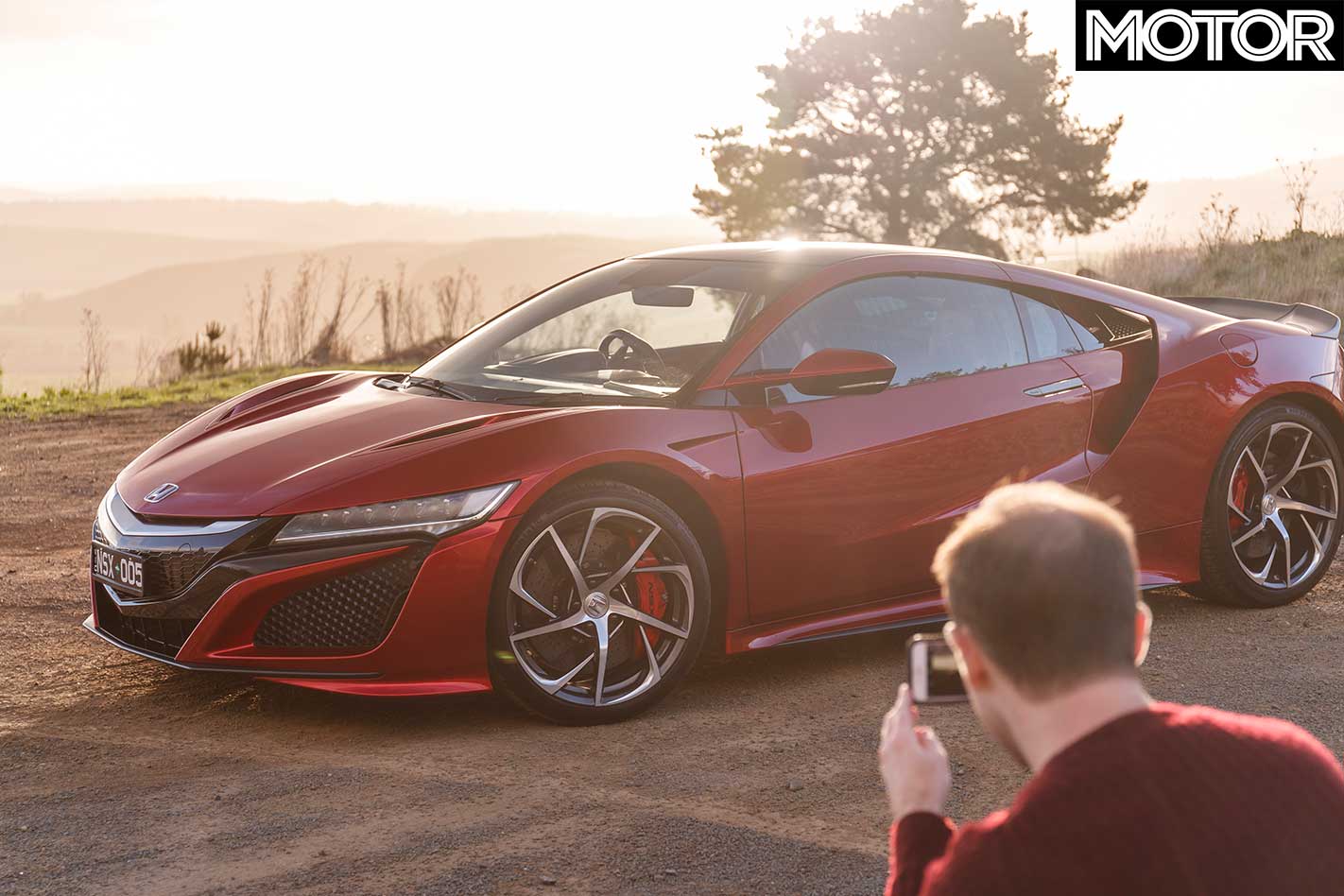
It’s small, 80mm shorter than a Porsche 911, but its width and (lack of) height instantly mark it as exotic and the Valencia Red paint is so rich and deep it’s like you could swim in it.
The overall shape is quite conservative, but some of the details, particularly around the nose, have a concept car’s glitziness. It needs some flash; it’s tempting to think of the NSX as Japanese, but it was primarily designed and developed in the US, which is expected to be its biggest market.
A giveaway is the seats: wide and well-supported, they feel quite high, but you sit so low to the ground it’s an illusion created by a very low dash. The materials are beautiful, let down only by HVAC and sat-nav lifted from a Civic.

The semi-quartic steering wheel also feels a little large and is very fat where your hands rest, making the paddles a stretch. I’m not sure the interior is exotic enough for the price tag, but it does feel extremely well made, the advantage of a mass market manufacturer making a supercar.
The dash is dominated by the drive mode selector, but the default Sport is sufficient to escape Hobart. The NSX quickly impresses. The ride is firm but compliant, forward visibility is excellent, the steering beautifully weighted, the brakes nicely progressive and there’s just enough noise from the engine behind to remind you you’re driving something special.
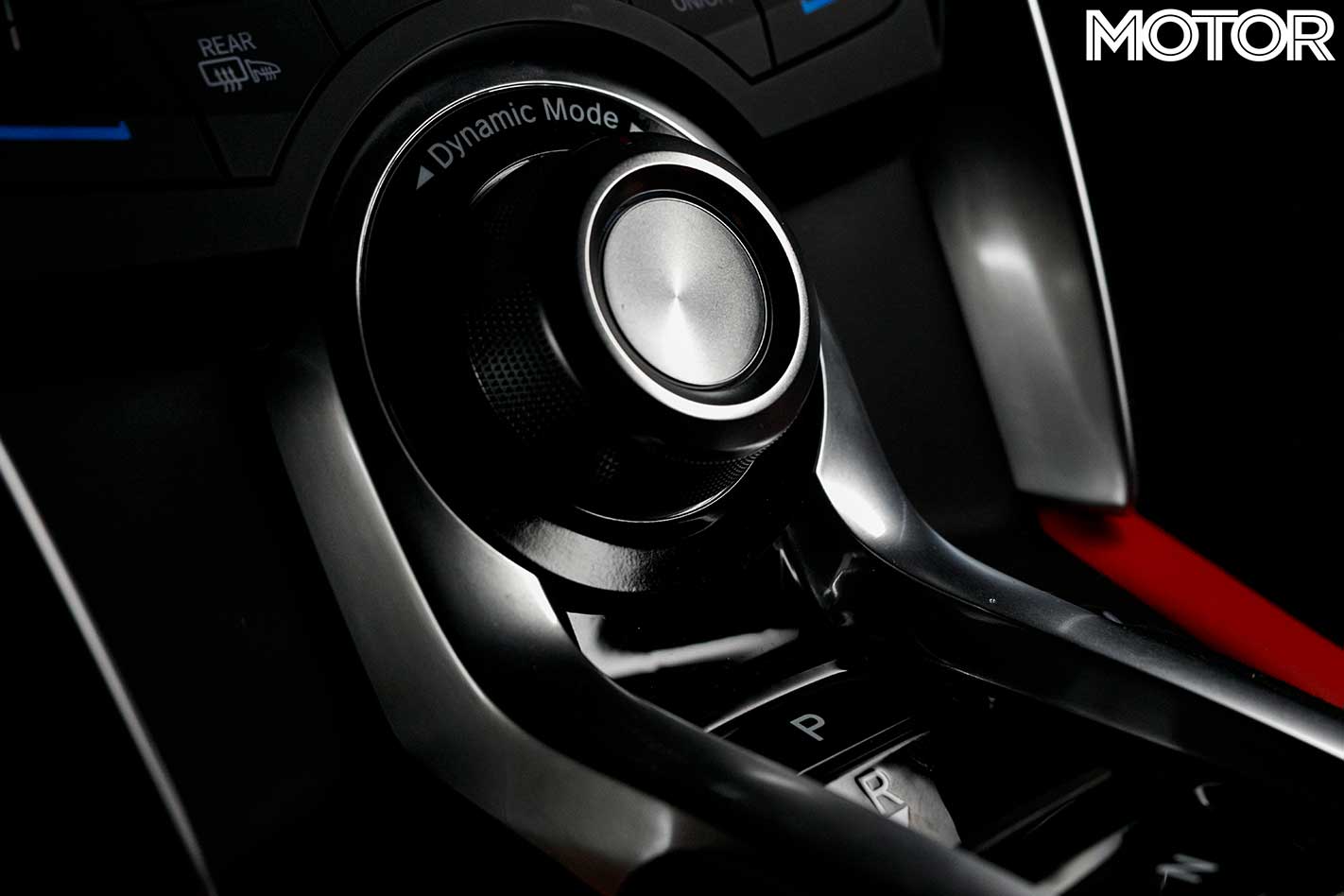
New Norfolk provides the final opportunity for fuel before heading west; we’re likely to need every one of the NSX’s 59 litres. The countryside begins immediately, the B62 following the River Derwent before we turn left onto the B61 and continue into Maydena, a tiny hamlet (population 245 as of 2006) once known for timber and mining, now one of the world’s premier mountain-biking destinations.
Prior to 1964, the road ended here, Tasmania’s rugged south-west accessible only by boat, foot or aeroplane. Despite its remoteness, the region was identified as the most suitable for a large hydro-electric scheme. Early assessment was completed by flow recorders in the Gordon River and aerial survey, but the arrival of helicopters in the mid-1950s allowed survey work to be completed more quickly and in greater detail.
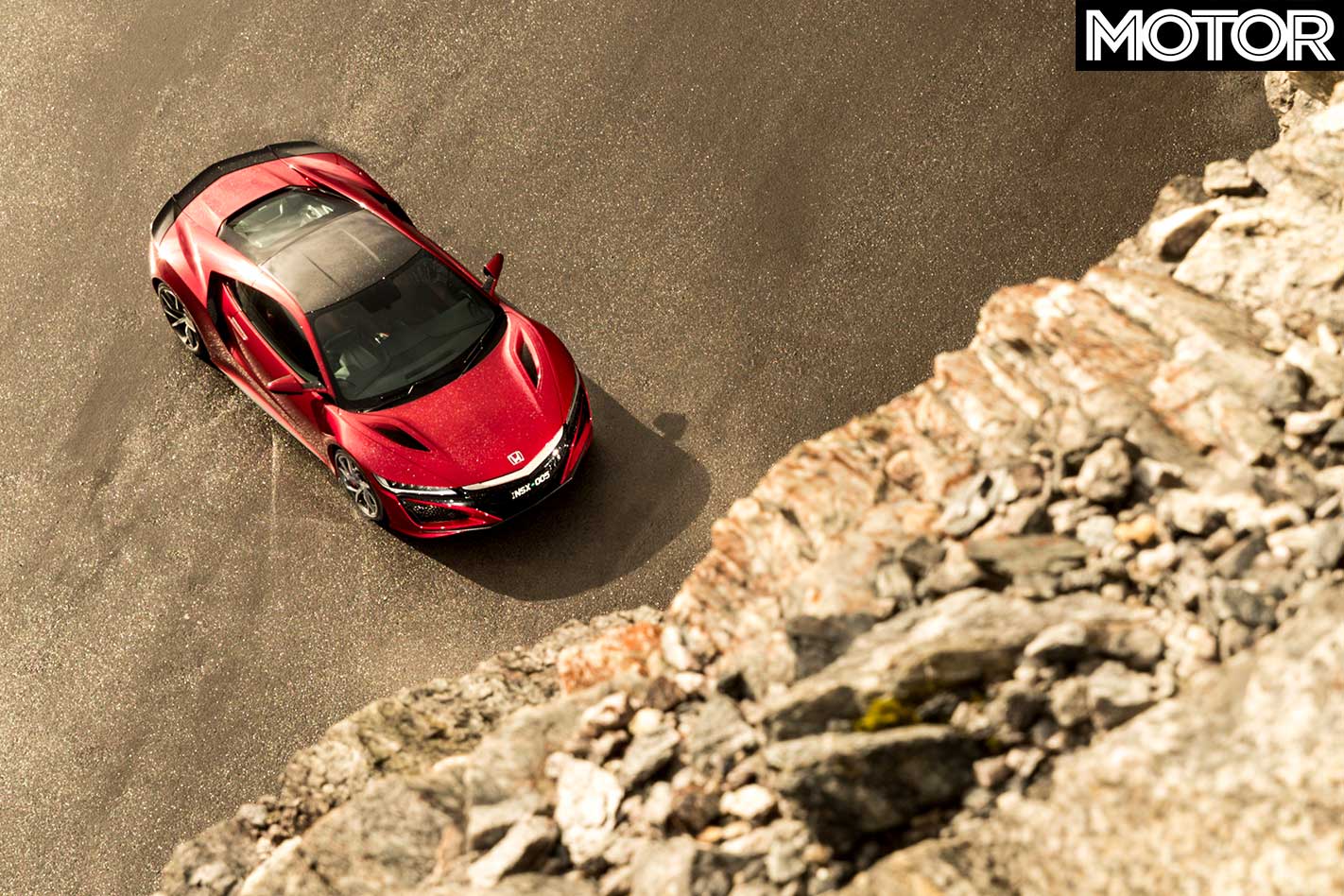
The dam’s current location was found to be ideal, but it was 80km from the nearest road. Construction began in January 1964, with the intended route set by chains dropped from helicopters. It was brutal work. The crews were flown in by helicopter and worked out of tents for a month at a time, battling unforgiving terrain and vicious weather.
The south-west of Tasmania is an inhospitable place; the average annual rainfall is four metres and if the weather was bad the helicopters couldn’t fly, isolating the crews. For one six-week period it rained every single day.
Construction took three years. It was unlikely their intention, but those hard-working crews created one hell of a driving road. For 50km it winds its way through lush forest, constant high-speed sweepers interspersed with long straights and the occasional tight bend. The rain is intermittent but the road always wet, conditions the NSX relishes.
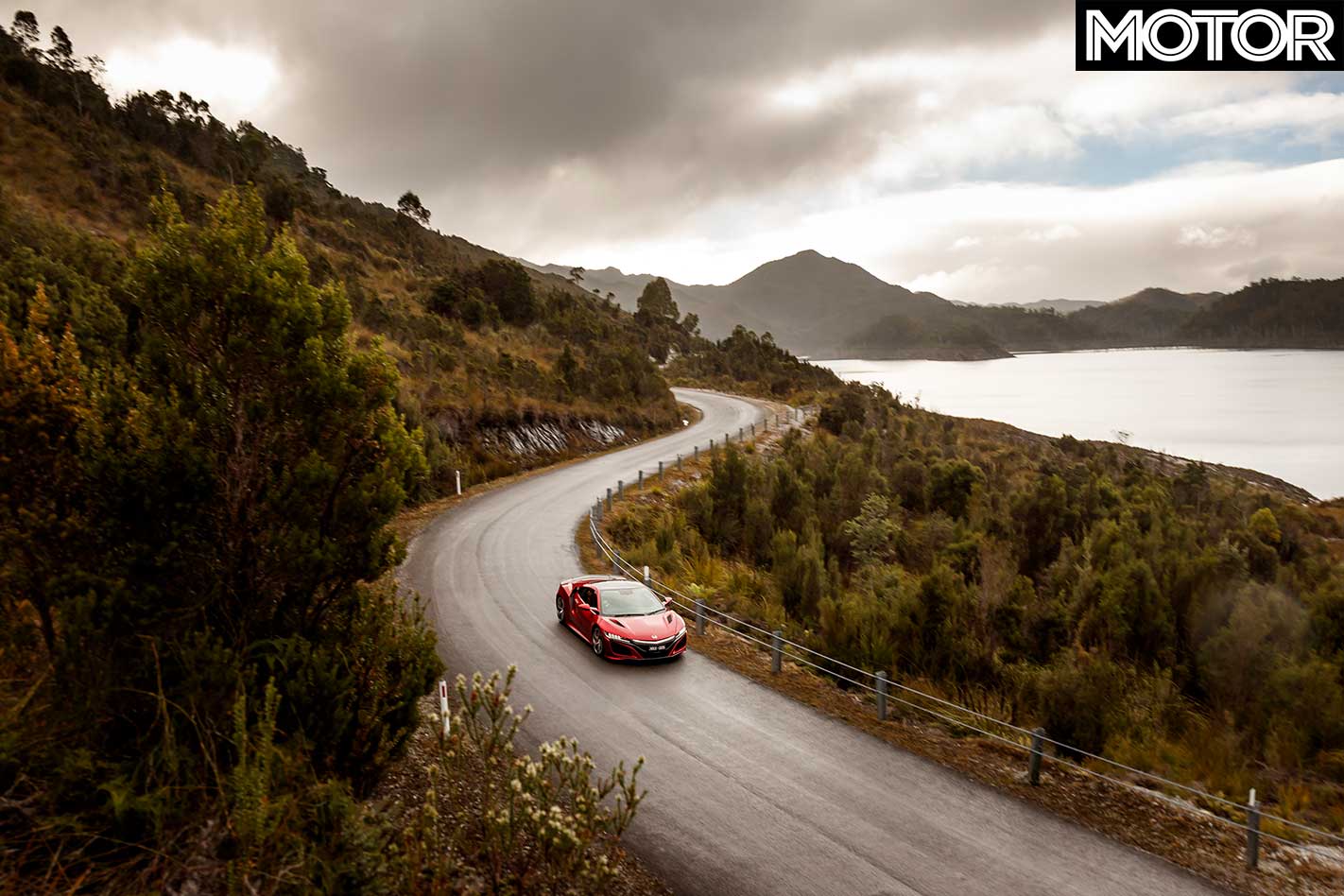
Even on this shiny, mossy tarmac it’s difficult to approach its limits, the Continental ContiSportContacts extracting unlikely levels of grip from the slippery surface. Only the occasional clumsy application of trail-braking edges the rear wide, ESP quickly mopping up the ensuing slide.
Traction is absolute, there are no sudden stabs of oversteer like you’d experience in a 911 Turbo or GT-R in conditions like these, the front electric motors pulling the car from a corner before the engine has had the chance to overcome the rear tyres.
Sport remains the drive mode of choice. The steering isn’t particularly communicative, but its weighting and accuracy is of great benefit as the NSX is so wide it fills the entire lane.
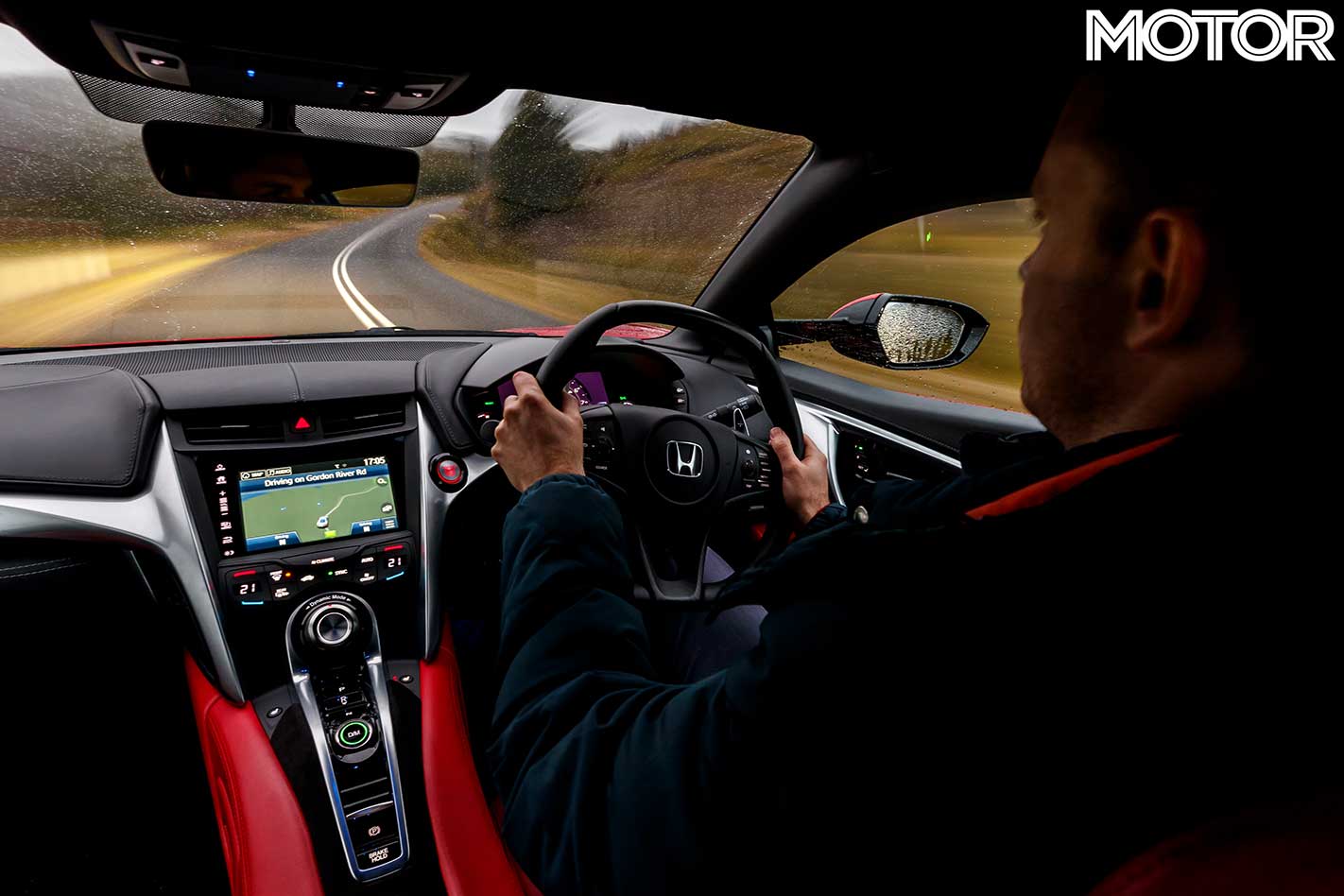
Of particular note are the brakes: the combination of carbon-ceramic discs, energy recuperation and brake-by-wire should result in a pedal with all the life of a parliamentary budget debate, but there’s real feel with the added bonus of free power as every application tops up the 72 battery cells wedged between the passenger compartment and engine bay.
The chassis has tremendous poise, with an agility that belies its 1780kg kerb weight, but the experience is a little prescriptive on the road. There’s so much grip that driving quickly becomes a game of brake, turn, go; push really hard and the NSX will occasionally pivot sharply mid-corner, an unusual trait that’s presumably the effect of the independent front drive units. It’s very impressive, but not particularly involving, though there aren’t many tight corners to really dig in.
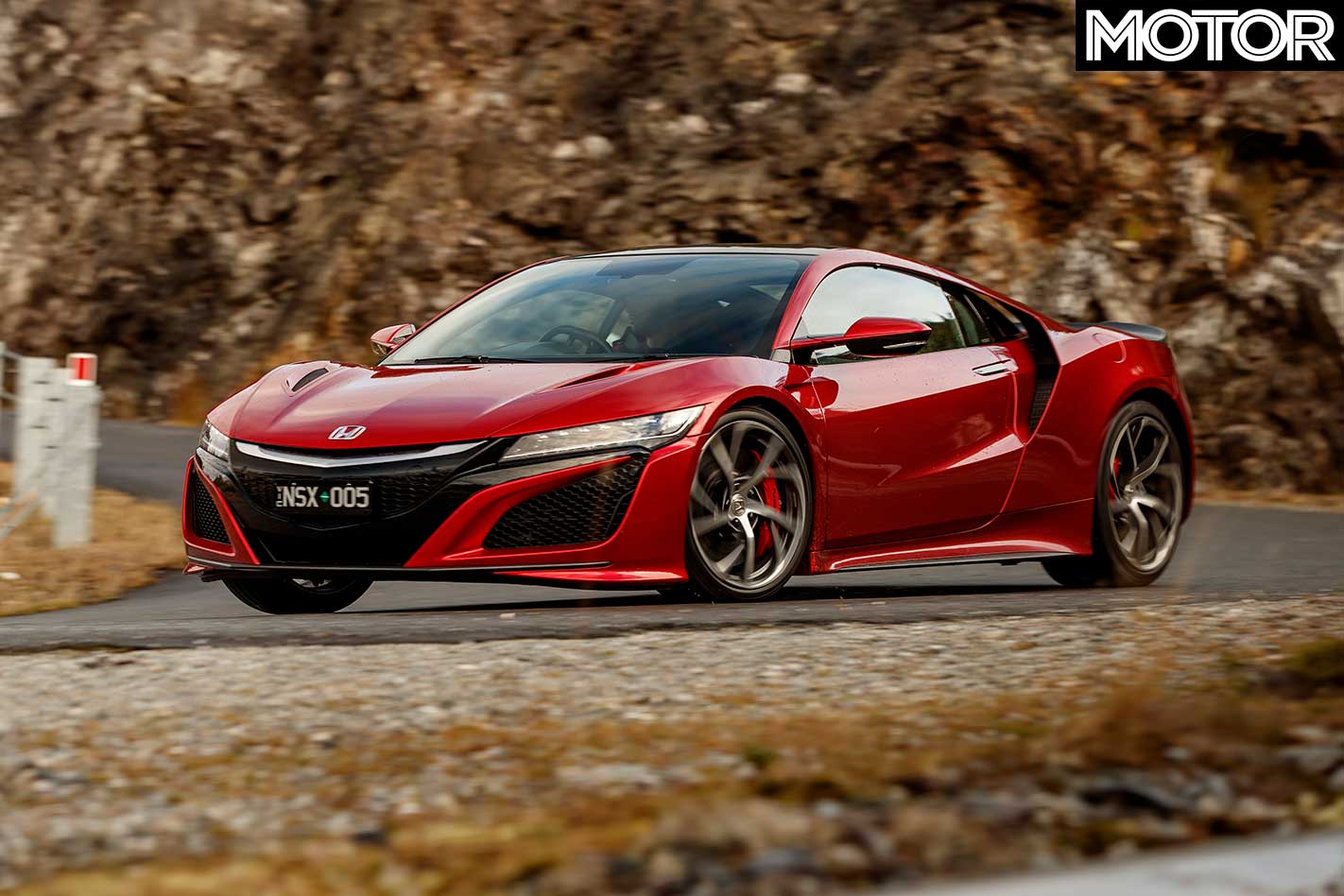
Of greater frustration is the inability to meld the various drive modes. Selecting Sport Plus to sharpen throttle response and loosen the ESP slightly also adds steering weight and stiffens the suspension.
The former is unnecessary given the default setting is excellent, but the latter makes Sport Plus virtually unusable on these roads. The damping isn’t necessarily too stiff, it’s like there’s not enough travel to absorb the bumps, the NSX skipping and hopping all over the road; driving at speed on this somewhat gnarled West Tasmanian tarmac feels akin to being trapped in a tumbler dryer.
Abruptly, the scenery changes, the dense forest disappearing to reveal a breathtaking vista. The Sentinel Ranges loom ahead, overlooking a vast grassy plain, the mountain tops shrouded in mist. It’s the sort of scene in which a dinosaur or two wouldn’t look out of place. It’s also bitterly cold.
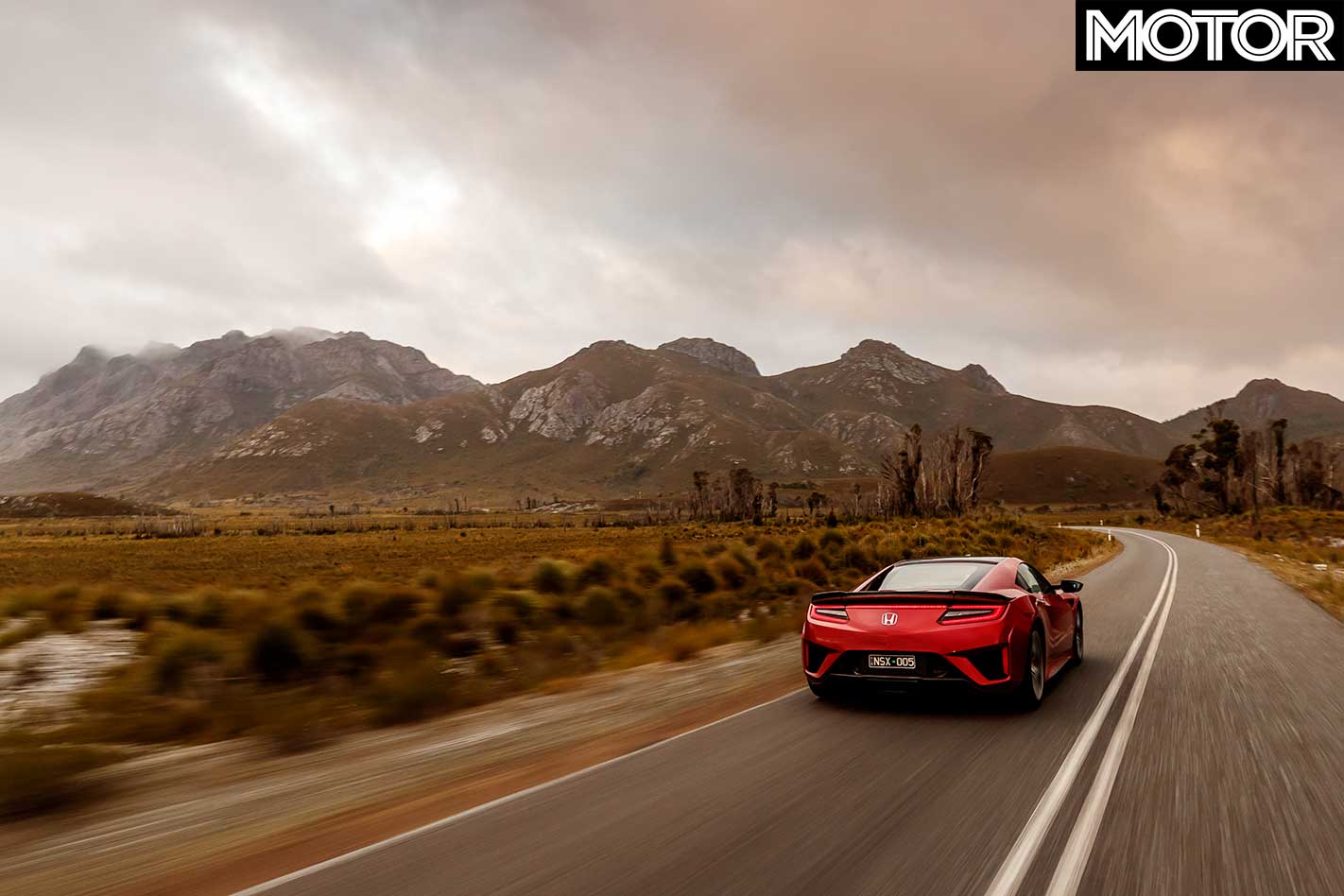
There isn’t much luggage space in an NSX, the front being full of electric motors and the middle full of occupants and engine. A tiny 110-litre boot at the rear can accept a couple of small bags, but its proximity to the engine cooks anything placed within. Not too practical, but currently very welcome as it’s pre-warmed our jackets nicely.
The smoother surface and wider, more open sweepers across the grasslands offer a chance to experience the savage speed of the NSX. At its release, Honda refused to release performance claims, saying only that its hybrid supercar’s acceleration was “competitive”. We scoffed, assuming that meant the NSX couldn’t match its rivals, but the ruthless efficiency of its drivetrain refutes this ignorant assumption.
Its off-the-line punch makes three seconds flat from 0-100km/h feel accurate and the way it sustains the pace suggests high-10sec quarters.
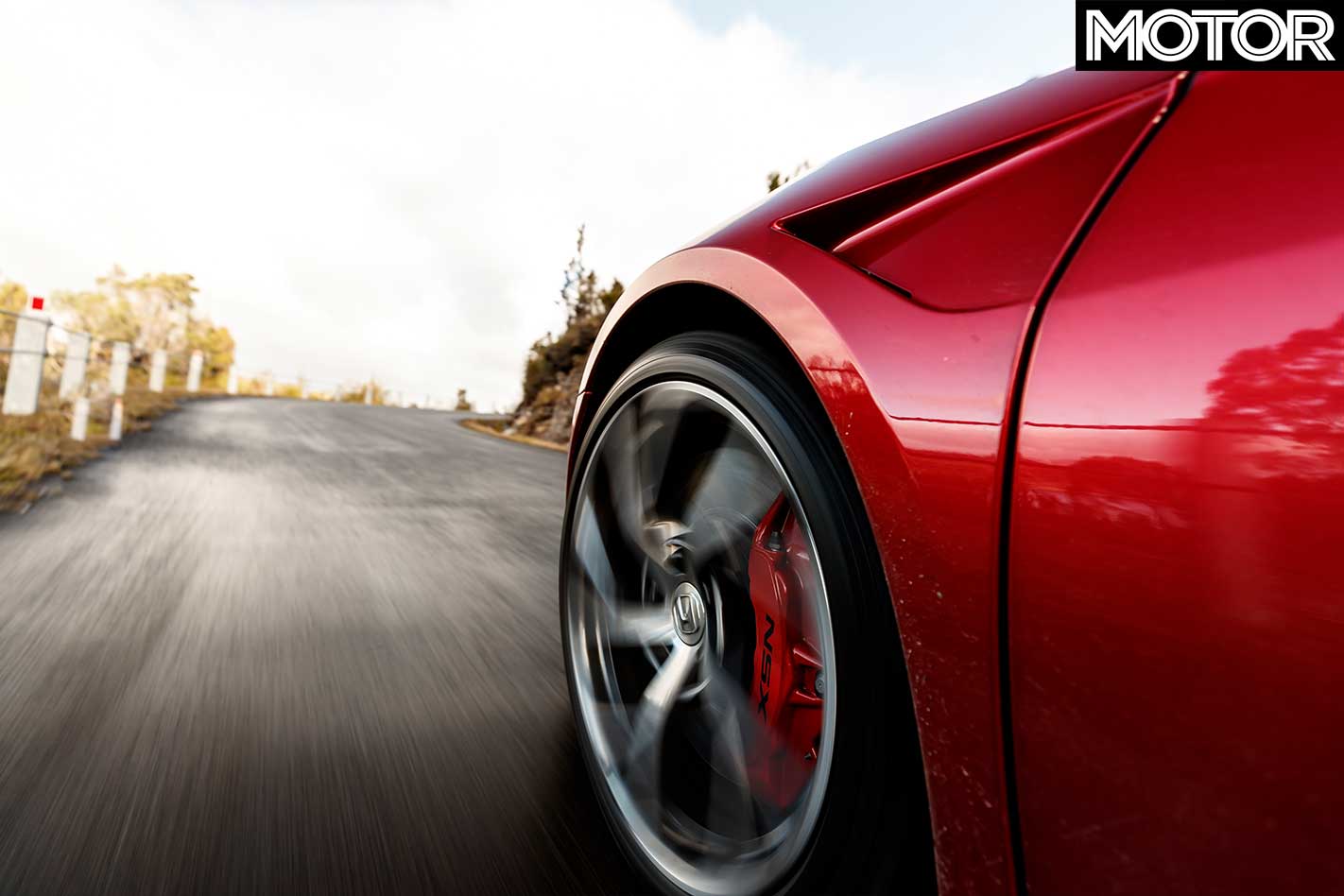
The NSX’s power feels similar to its competitors, but its delivery is unique. No combustion engine can match the immediate response of electric motors, the instant torque delivery whipping your head back against the seat.
With those batteries filling any holes in the torque curve, the V6 revs keenly to 7500rpm and makes an angry howl on the way there. But if the powertrain is great, the gearbox is incredible, almost certainly the world’s best. Shifts are instant and seamless and the ratios tightly stacked; even with nine gears the engine is spinning at 2000rpm at 115km/h.
Extending the NSX quickly has us in Strathgordon, a town built to operate as a base during the construction of the dam. Today, we seem to be its only inhabitants, but at its peak in the mid-1970s it housed 2000 people and had its own shopping complex, school with 230 students, sports centre, heated indoor swimming pool, butcher, hairdresser and post office.
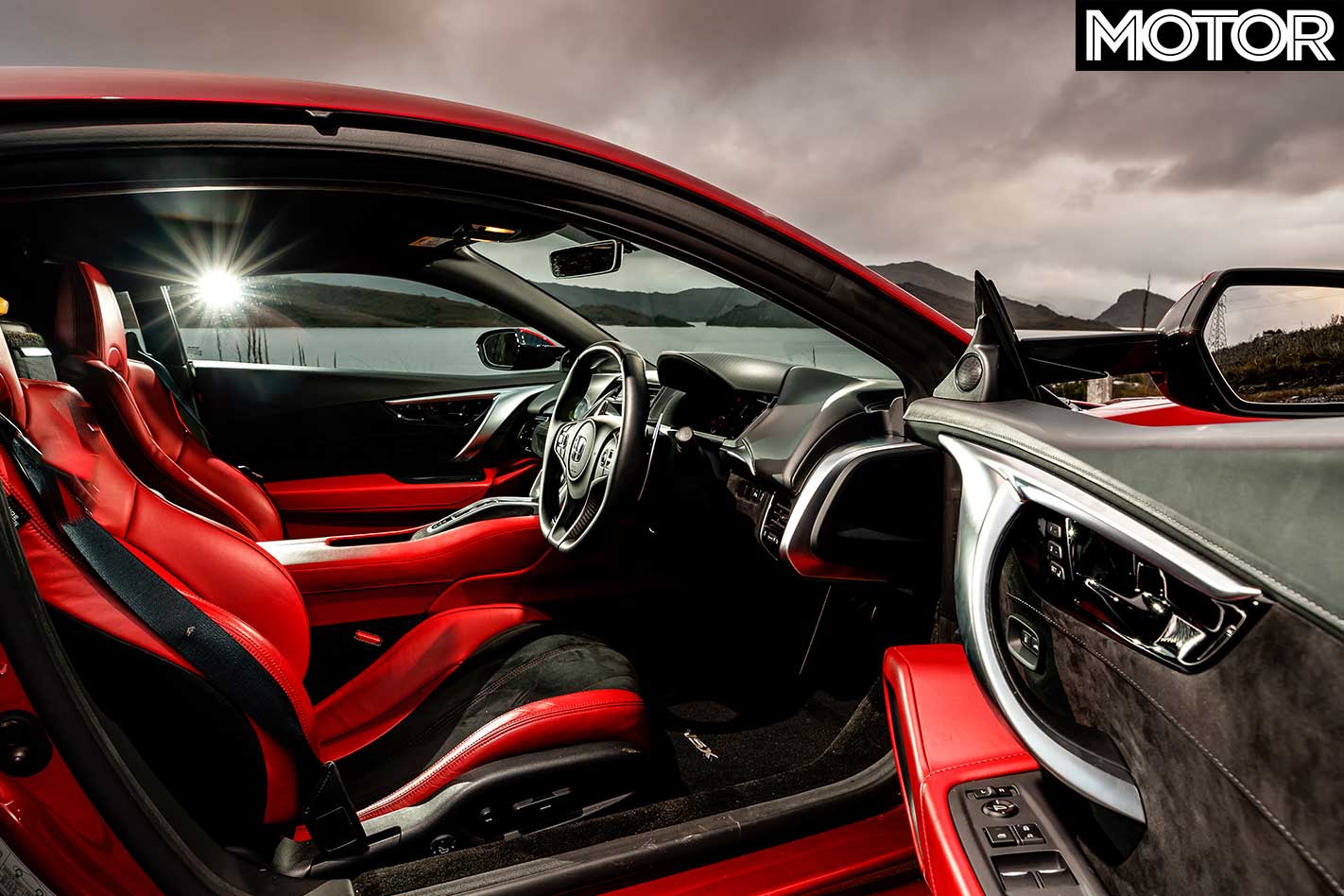
Many workers brought their families; those who didn’t lived in the singlemens’ quarters which could house 640 people. Sadly, not all of those could fit at the bar, which could only seat 500 people at a time (seriously).
Drinking was a popular pastime to unwind. Shifts were between 10 and 12 hours in length and any complaints about the weather were met with the motto: “if you want to keep warm, keep working”.
The Gordon Dam was not a straightforward project. Before construction could start the river needed to be diverted down a 340m-long tunnel. The asymmetric walls of the gorge made the shape of the dam crucial for strength and stability, the engineering team, led by Dr Sergio Giudici, settling on a double-curvature arch design, meaning the dam is curved horizontally and vertically.
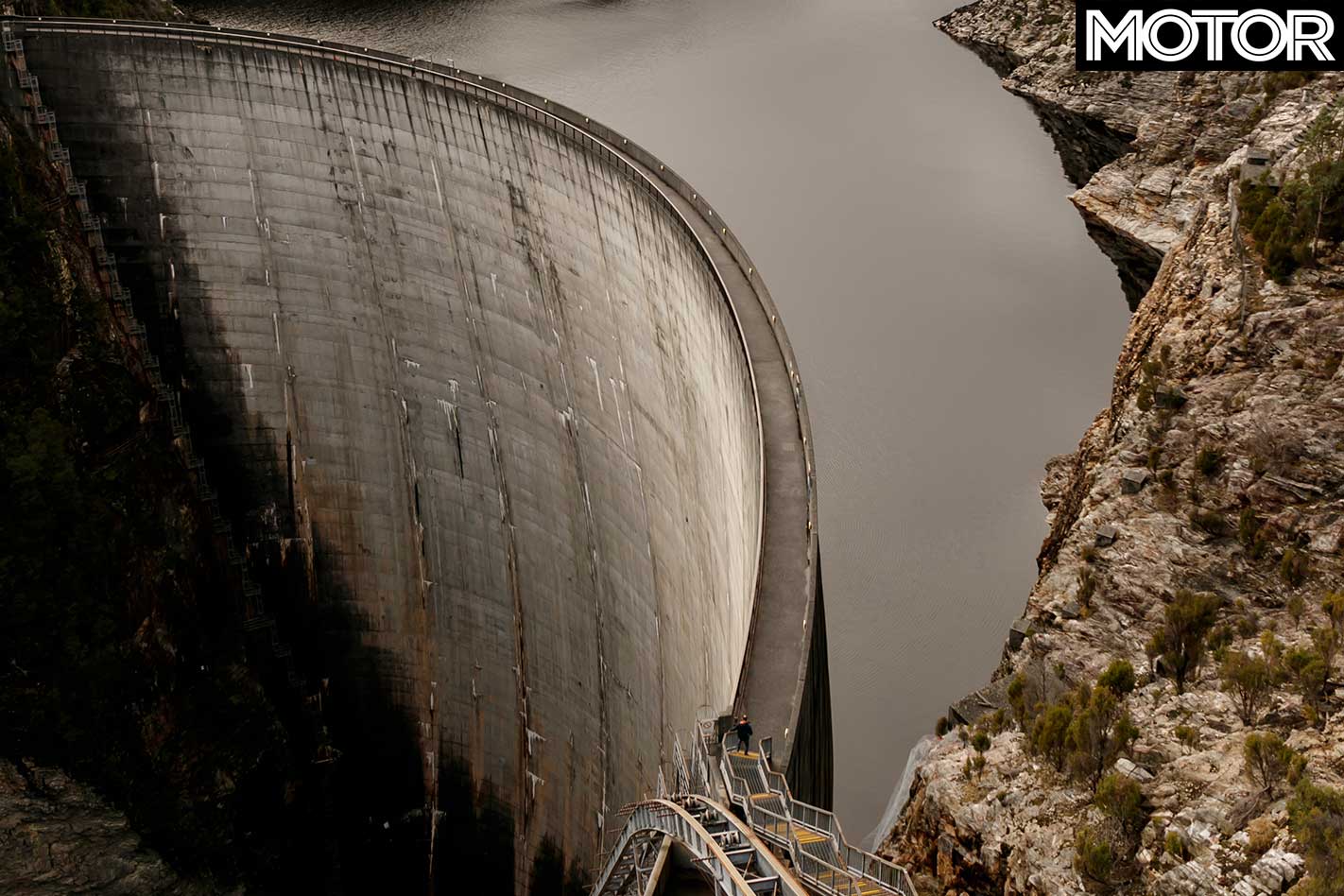
It uses the force applied by the water to compress and strengthen the dam, Lake Gordon transferring half a million tons of pressure into each side of the gorge. With a surface area of 272km2, Gordon is the largest lake in Australia, its maximum capacity of 12.36 million megalitres four times that of Victoria’s Lake Eildon.
The dam itself is twice the height of the next tallest double-arch structure and contains 154,000m3 of concrete, the first pour occurring on 19 January 1972, and the final on 25 November 1974. Engineers say it will theoretically last forever.
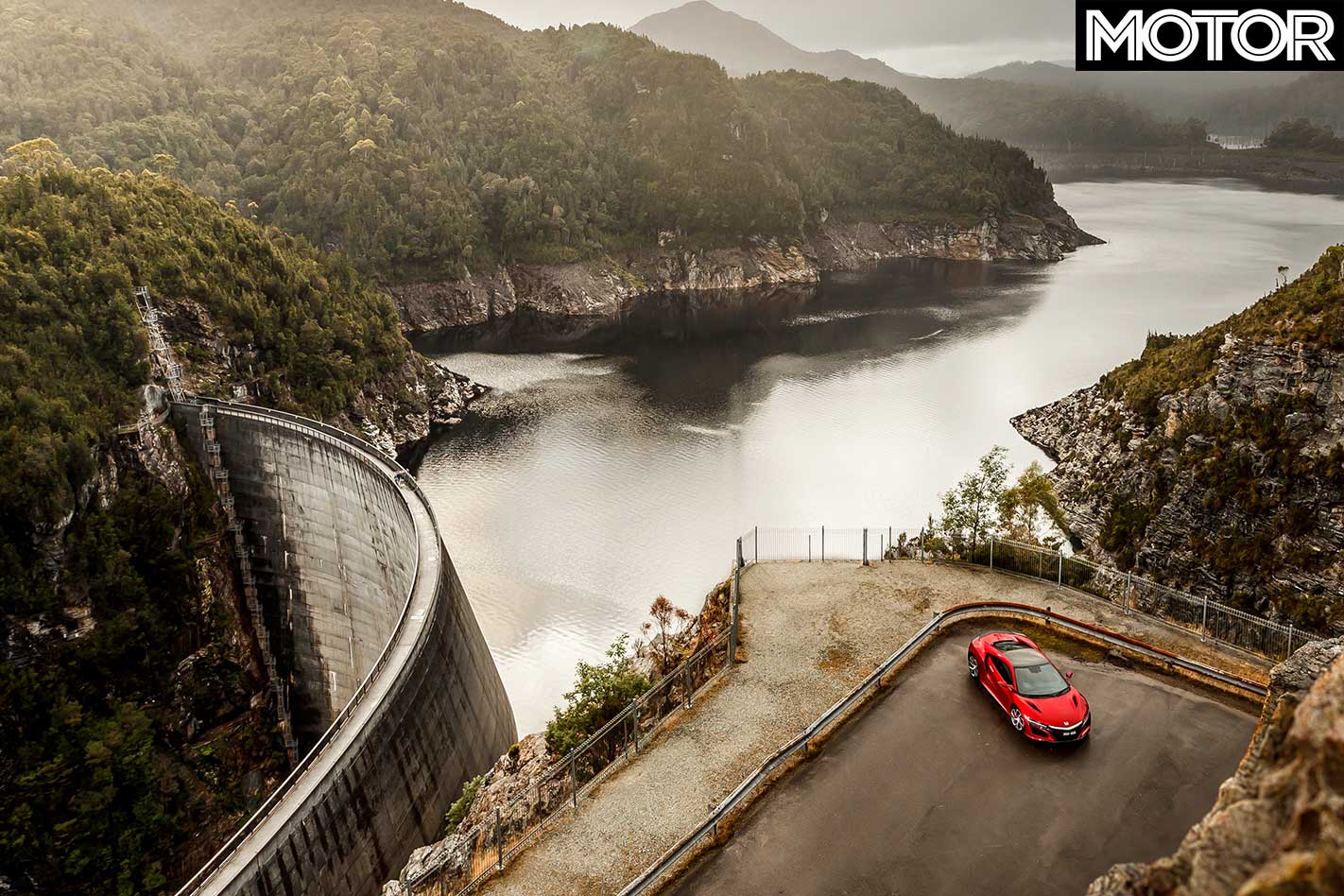
Impressive as it is, the dam’s only job is to hold back the water. The true work is done by the Gordon Power Station hidden 60 stories underground. An enormous room, 95m long by 45m wide by 38m high, was excavated to house the turbines, the first two spinning into operation in 1978, the third a decade later. It’s a humbling place, an incredible example of human ingenuity located in a scene of astounding natural beauty.
We could’ve come here in any car, but to do it in an NSX feels right. The Gordon hydro-electric scheme was built to provide generations of Tasmanians with power in an environmentally sustainable manner. In a strange way, Honda’s battery assisted supercar is performing the same role. By incorporating hybrid drive, it proves car nuts needn’t give up on their obsession with power just yet.
*A big thank you to Peter Kapeller for his help with this story.
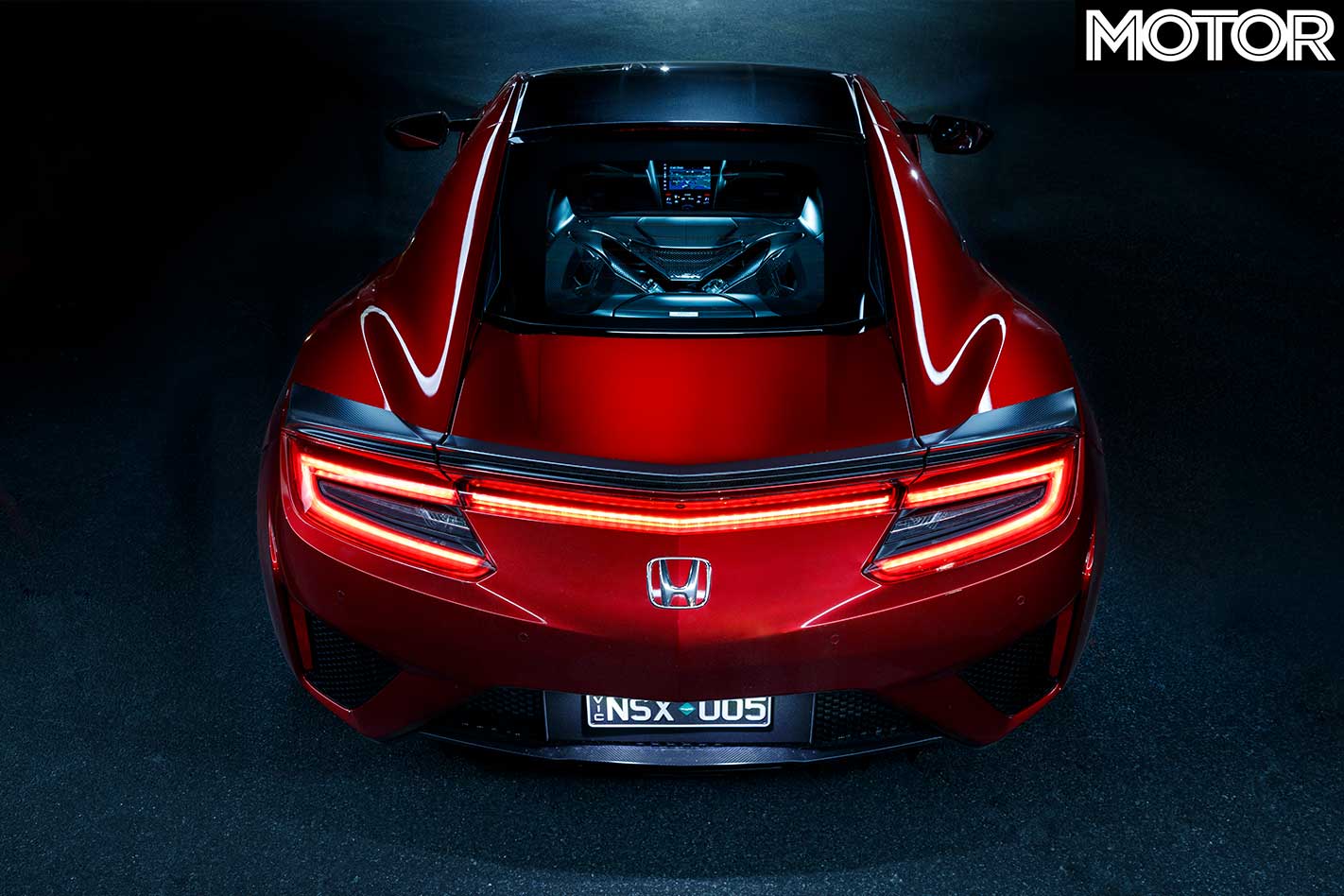
FAST FACTS 2018 Honda NSX
BODY: 2-door, 2-seat coupe DRIVE: all-wheel ENGINE: 3493cc V6, DOHC, 24v, twin-turbo POWER: 373kW @ 6500-7500rpm TORQUE: 550Nm @ 2000-6000rpm BORE/STROKE: 91.0mm x 89.5mm COMPRESSION RATIO: 10.0:1 ELECTRIC MOTORS: twin drive units (f); direct-drive unit (r) ELECTRIC OUTPUT: 90kW/293Nm SYSTEM OUTPUT: 427kW/646Nm WEIGHT: 1776kg POWER-TO-WEIGHT: 240kW/tonne TRANSMISSION: 9-speed dual-clutch SUSPENSION: double wishbones, adaptive dampers, anti-roll bar (f); multi-links, adaptive dampers, anti-roll bar (r) L/W/H: 4487/1939/1204mm WHEELBASE: 2630mm TRACKS: 1656mm (f); 1618mm (r) STEERING: electrically assisted rack-and-pinion BRAKES: 380mm carbon cermic discs, 6-piston calipers (f); 360mm carbon ceramic discs, 4-piston calipers (r) WHEELS: 19.0 x 8.5-inch (f); 20.0 x 11.0-inch (r) TYRES: Continental ContiSportContact 5P, 245/35 ZR19 (f); 305/30 ZR20 (r) PRICE: $420,000 ($430,000 as-tested)
PROS: Amazing gearbox; hybrid integration; pace; looks CONS: Price tag; rough road composure; a bit prescriptive RATING: 4 out of 5 stars
Winding your way into tassie’s wild west
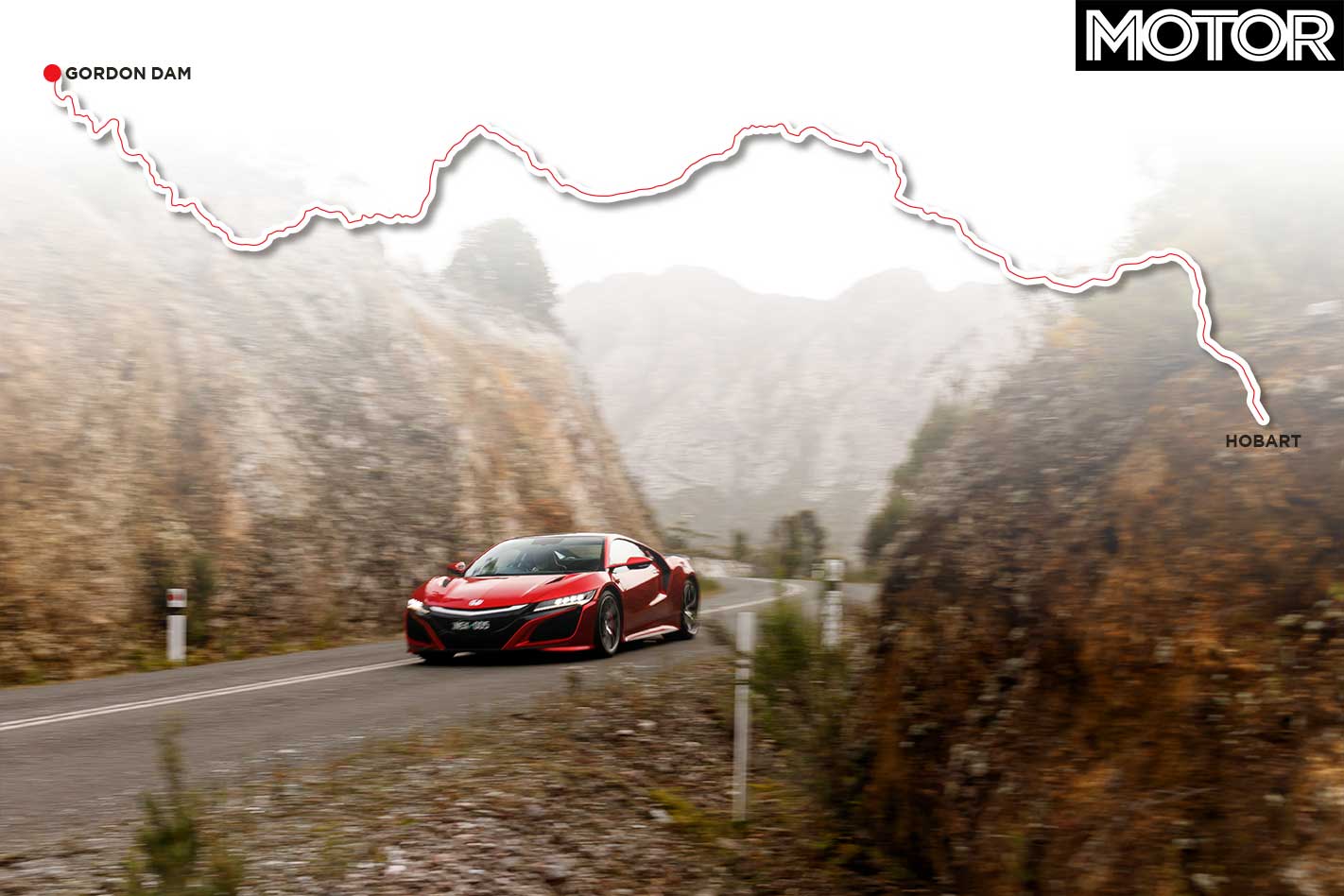
The road to the Gordon Dam is the only stretch of tarmac in the entire south-west corner of Tasmania. To get there, head north out of Hobart on Highway 1 before continuing on to the A10 at Granton.
As mentioned in the story, New Norfolk is your final opportunity for 98RON. Continuing on to the B62 takes you through the ironically named town of Plenty on to Bushy Park and Westerway. Here you turn left onto the B61, which runs all the way to the dam, though if you have the time, shortly after the turn-off a quick side expedition to Russell Falls is well worth it, particularly after heavy rain.
In total, the return journey is about 350km, but expect it to take most of the day with stops for photography.


